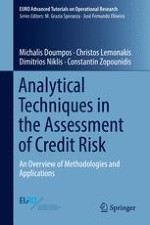This book provides a unique, focused introduction to the analytical skills, methods and techniques in the assessment of credit risk that are necessary to tackle and analyze complex credit problems. It employs models and techniques from operations research and management science to investigate more closely risk models for applications within the banking industry and in financial markets. Furthermore, the book presents the advances and trends in model development and validation for credit scoring/rating, the recent regulatory requirements and the current best practices. Using examples and fully worked case applications, the book is a valuable resource for advanced courses in financial risk management, but also helpful to researchers and professionals working in financial and business analytics, financial modeling, credit risk analysis, and decision science.
